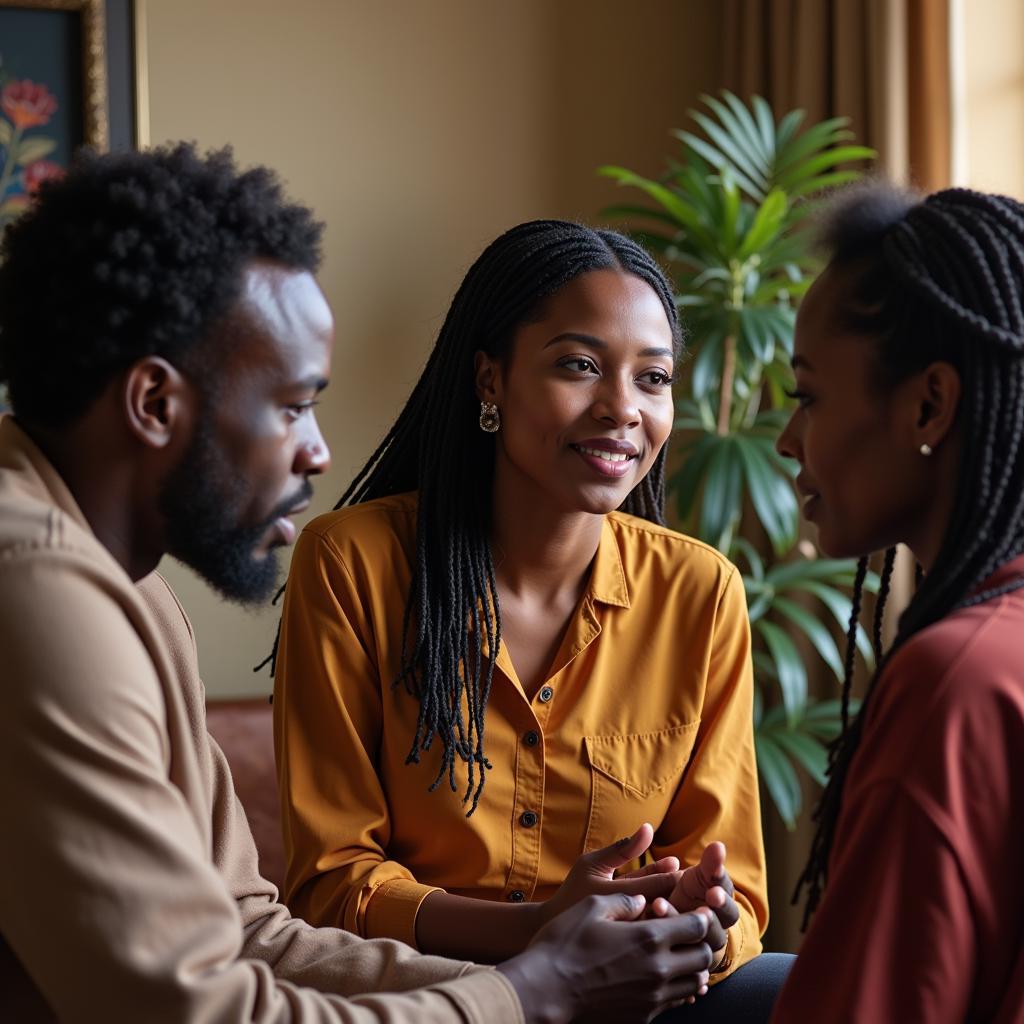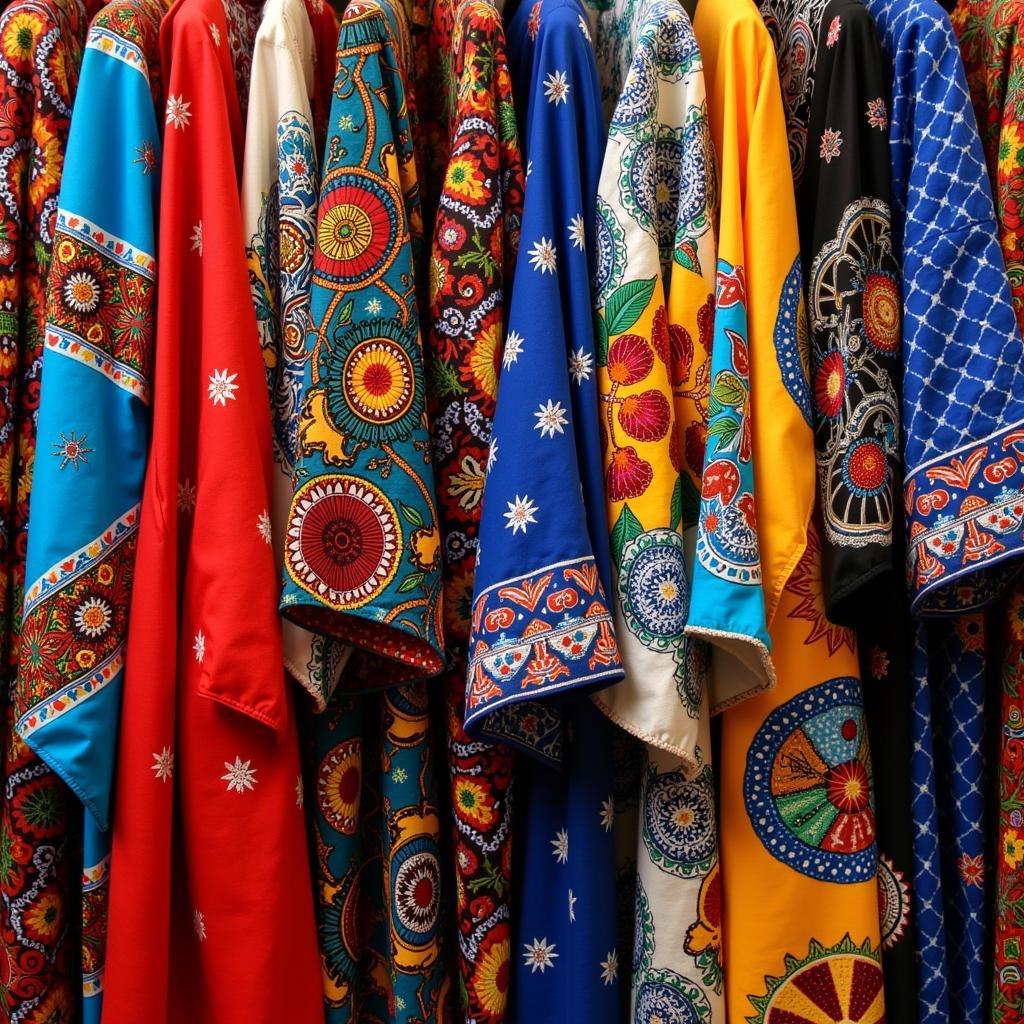African Costume for Kids: A World of Culture and Creativity
African Costume For Kids offers a vibrant and meaningful way to celebrate the continent’s rich heritage. From the intricate beadwork of the Maasai to the colorful textiles of West Africa, traditional African clothing is a feast for the eyes and a testament to the creativity of its people. Whether you’re looking for an outfit for a cultural event, school project, or simply want to add some global flair to your child’s wardrobe, African costume provides a unique opportunity to teach children about diversity and the beauty of other cultures.
Exploring the Diversity of African Costume for Kids
Africa is a continent of 54 countries, each with its own distinct traditions, languages, and styles of dress. This vast diversity is reflected in the wide array of African costumes available for kids.
West African Costumes: A Tapestry of Color and Patterns
West Africa is renowned for its vibrant textiles, often featuring bold geometric patterns and intricate embroidery. Traditional garments like the boubou, a flowing robe worn by both men and women, and the dashiki, a colorful tunic for men, are easily recognizable and can be adapted into comfortable and stylish outfits for children. These costumes often incorporate kente cloth, a hand-woven fabric with symbolic patterns representing proverbs, historical events, or social beliefs.
East African Costumes: The Beauty of Beadwork and Nature
East African costumes are often characterized by the use of natural materials and intricate beadwork. The Maasai people, for instance, are known for their striking red and blue shukas (blankets) and elaborate beadwork jewelry. Children’s costumes can incorporate these elements with beaded necklaces, bracelets, and headbands complementing simple, comfortable clothing. Animal prints, particularly those of zebras and giraffes, are also popular motifs reflecting the region’s rich wildlife.
North African Costumes: Flowing Fabrics and Intricate Designs
North African costumes, influenced by Arabic and Berber cultures, often feature flowing fabrics like silk and linen. The djellaba, a long, loose-fitting robe with a hood, is a common garment in this region, suitable for both boys and girls. Intricate embroidery and embellishments with metallic threads add a touch of elegance and sophistication.
Choosing the Right African Costume for Kids
With so many options available, selecting the perfect African costume for your child can be an exciting adventure. Here are some factors to consider:
- Occasion: A cultural event might call for a more traditional and authentic costume, while a school project could offer more flexibility for creative interpretations.
- Comfort: Choose fabrics that are breathable and comfortable for children to wear, especially for extended periods.
- Authenticity: Whenever possible, opt for costumes made by artisans from Africa or from ethical companies that support fair trade practices.
- Child’s Preference: Most importantly, involve your child in the selection process. Ask them what interests them about African culture and which styles they find most appealing.
Beyond the Outfit: Appreciating African Culture
An African costume can be much more than just an outfit; it’s a gateway to learning about a diverse and fascinating continent. Use this opportunity to:
- Explore African folktales and mythology.
- Learn about traditional African music and dance. Did you know that there are specific [African cultural dance for kids] that are fun and educational?
- Discover the art of African storytelling and drumming.
- Try authentic African cuisine.
By immersing your children in different aspects of African culture, you can help them develop a deeper appreciation for the continent’s rich heritage and the diverse world we live in.
Conclusion: Celebrating Culture Through African Costume
African costumes for kids provide a fun and engaging way to celebrate the continent’s vibrant culture and heritage. By choosing authentic and meaningful costumes, you can teach children about diversity, creativity, and the beauty of embracing different traditions. Remember to involve your children in the selection process, making it a collaborative and enriching experience for the whole family. Let your child’s imagination soar as they embark on a cultural adventure through the colorful world of African costume!
FAQ: African Costume for Kids
1. Where can I find authentic African costumes for kids?
Online marketplaces specializing in handcrafted goods, African import stores, and ethical clothing companies are great places to start your search.
2. What is the best fabric for an African costume?
Lightweight and breathable fabrics such as cotton, linen, and kente cloth are ideal for children’s costumes, especially in warmer climates.
3. Can I make my own African costume?
Absolutely! There are many online resources and tutorials available for creating your own African-inspired outfits. This can be a fun and creative project for families to do together.
4. Are there any cultural sensitivities I should be aware of when choosing an African costume?
It’s important to approach cultural attire with respect and sensitivity. Avoid costumes that perpetuate harmful stereotypes or appropriate sacred or ceremonial garments.
5. How can I teach my child about the cultural significance of their African costume?
Research the history and traditions behind the specific style of costume you choose. Share interesting facts and stories with your child to make the experience more meaningful.
Need More Inspiration?
Check out these articles for more ideas on incorporating African culture into your child’s life:
- [African kids choir]
- [African kids dancing meme]
For any assistance, feel free to contact us:
Phone Number: +255768904061
Email: kaka.mag@gmail.com
Address: Mbarali DC Mawindi, Kangaga, Tanzania.
Our customer service team is available 24/7.


